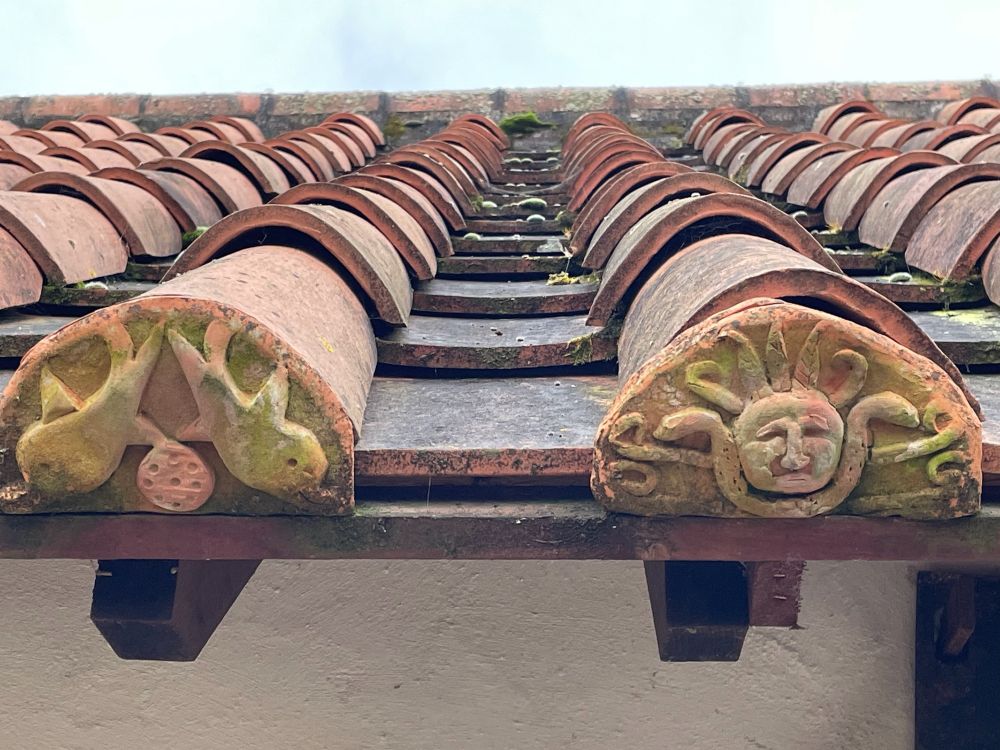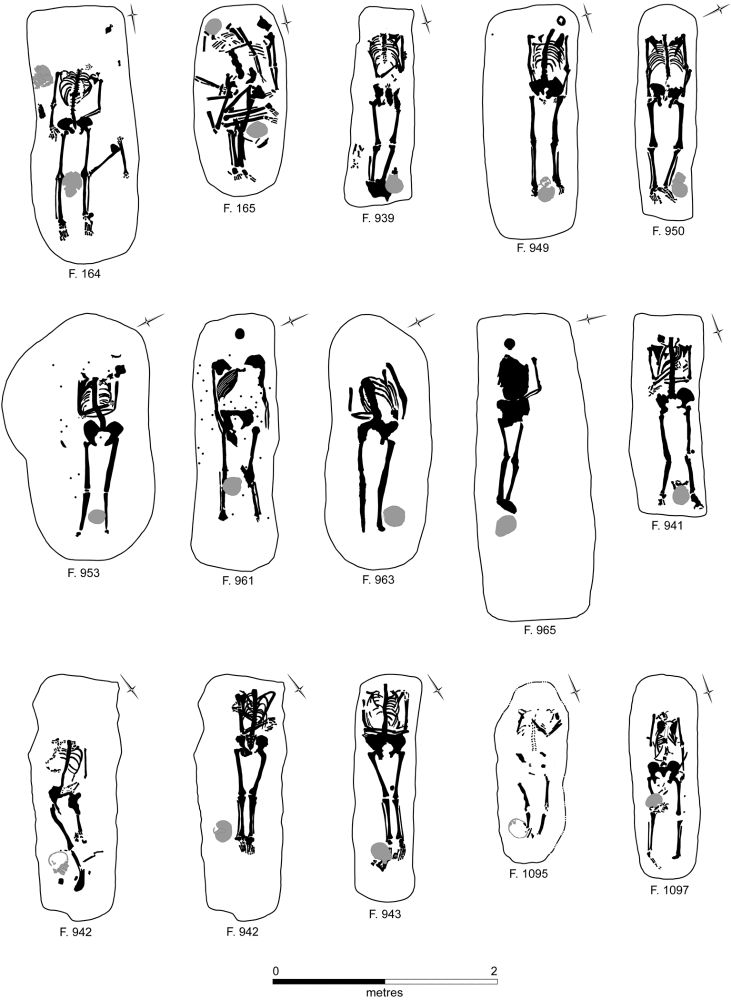
"The climate is wretched” - Tacitus, 'Agricola' 12
#RomanBritain

#EpigraphyTuesday
It would have welcomed guests to a small villa, which was the final phase of a farmstead originating in an Iron Age ‘banjo enclosure’.
C.3/4, now in the British Museum.
#MosaicMonday #RomanBritain #IronAge
#BecomingRoman
My 📸


It would have welcomed guests to a small villa, which was the final phase of a farmstead originating in an Iron Age ‘banjo enclosure’.
C.3/4, now in the British Museum.
#MosaicMonday #RomanBritain #IronAge
#BecomingRoman
My 📸

Filmed Tuesday morning, at fabulous @vindolandatrust.bsky.social before the snow!
#RomanFortThursday
Filmed Tuesday morning, at fabulous @vindolandatrust.bsky.social before the snow!
#RomanFortThursday
#ReliefWednesday
#RomanFortThursday


#ReliefWednesday
#RomanFortThursday
A new mosaic discovered just a few months ago, down the road from where my partner's sister lives.
It came to light as part of a housing development in Newnham, Glos.
But there's no intention to clear and record it fully, which is a crying shame! Details in Alt text.
#RomanBritain


A new mosaic discovered just a few months ago, down the road from where my partner's sister lives.
It came to light as part of a housing development in Newnham, Glos.
But there's no intention to clear and record it fully, which is a crying shame! Details in Alt text.
#RomanBritain


A new mosaic discovered just a few months ago, down the road from where my partner's sister lives.
It came to light as part of a housing development in Newnham, Glos.
But there's no intention to clear and record it fully, which is a crying shame! Details in Alt text.
#RomanBritain
She’ll be presenting the Joan Pye lecture on ‘Tales from the Tablets: recovering the voices of Roman Britain’.
#archaeology #classics #roman 🏺
Book your tickets here: tinyurl.com/Romanvoices

She’ll be presenting the Joan Pye lecture on ‘Tales from the Tablets: recovering the voices of Roman Britain’.
#archaeology #classics #roman 🏺
Book your tickets here: tinyurl.com/Romanvoices
This is a massively underated set of sites & it was really exciting to explore! 🏴
🧵👇




This is a massively underated set of sites & it was really exciting to explore! 🏴
🧵👇
It's a huge step forward that's taken a decade to develop
It's a huge step forward that's taken a decade to develop
Beautifully captured in watercolour by the great archaeologist, Tessa Verney Wheeler in 1929 🤩
Original painting held by @antiquaries.bsky.social
#MosaicMonday

Beautifully captured in watercolour by the great archaeologist, Tessa Verney Wheeler in 1929 🤩
Original painting held by @antiquaries.bsky.social
#MosaicMonday
The rationale is unknown but one theory is it was to ensure the 'restless dead' stayed in the grave... #Halloween #RomanBritain

The rationale is unknown but one theory is it was to ensure the 'restless dead' stayed in the grave... #Halloween #RomanBritain

Dogs were associated with healing which makes his presence at #RomanBritain 's most famous health spa very appropriate.
Now in the Roman Baths Museum.
#PhallusThursday #Bath
#GoodBoy

Dogs were associated with healing which makes his presence at #RomanBritain 's most famous health spa very appropriate.
Now in the Roman Baths Museum.
#PhallusThursday #Bath
#GoodBoy
A new section of Hadrian’s Wall has been discovered! The furthest west bit found yet - and it is glorious! 🤩
Reported by the great WC21. Link to his full video here: youtu.be/VfVvl3A_sO4?...
#archaeology #history #Roman
A new section of Hadrian’s Wall has been discovered! The furthest west bit found yet - and it is glorious! 🤩
Reported by the great WC21. Link to his full video here: youtu.be/VfVvl3A_sO4?...
#archaeology #history #Roman
Today we’re celebrating animation’s power to tell bold stories - like this brilliant piece by Sharare, who works with us at St Albans Museums. The animation captures the fierce spirit of Boudicca, the warrior queen who burned Roman Verulamium to the ground.
Today we’re celebrating animation’s power to tell bold stories - like this brilliant piece by Sharare, who works with us at St Albans Museums. The animation captures the fierce spirit of Boudicca, the warrior queen who burned Roman Verulamium to the ground.
(Algorithm gods sent me - too good to wait til #MosaicMonday to share.)
www.worldofinteriors.com/story/hackne...

The materials used were mainly local: limestone (yellow), Purbeck chalk (white), Kimmeridge shale (black) & crushed tile (red).
Later C.2, now in @readingmuseum.bsky.social
#RomanBritain #MosaicMonday



The materials used were mainly local: limestone (yellow), Purbeck chalk (white), Kimmeridge shale (black) & crushed tile (red).
Later C.2, now in @readingmuseum.bsky.social
#RomanBritain #MosaicMonday





Wrong about almost everything, but fascinating nonetheless.
Wiltshire Museum @wiltshiremuseum.bsky.social
#RomanSiteSaturday
#RomanBritain
#Londinium

Wrong about almost everything, but fascinating nonetheless.
Wiltshire Museum @wiltshiremuseum.bsky.social
#RomanSiteSaturday
#RomanBritain
#Londinium
Late C2 / C3
#MosaicMonday #RomanBritain
@coriniummuseum.bsky.social

Late C2 / C3
#MosaicMonday #RomanBritain
@coriniummuseum.bsky.social
#RomanBritain #AncientBluesky

#RomanBritain #AncientBluesky
Reconstructed ceiling painting found under Trier Cathedral, Germany. One of 15 figured panels, it may depict a personification of Wealth or a lady of the imperial family. When seen in person, the skill & patience of the restorers is staggering!
Early C.4, now in the Museum am Dom.
1/4
![The female figure is shown taking a string of pearls from a jewellery box, with her pinkie raised, as if showing it to the viewer. She wears a small golden crown, a laurel wreath, a chunky bejewelled necklace and a halo (nimbus) appears behind her head. The blue background was painted with expensive 'Egyptian blue' pigment, and the image is framed by bold red and green borders. It is made up of 100s of fragments of plaster.
(c) R. Scheider from the Museum am Dom website.
[Photography is forbidden in the museum.]](https://cdn.bsky.app/img/feed_thumbnail/plain/did:plc:xkwpcac33nehntion4dkmt2t/bafkreibezkdhvciu54lofexsppgyle7mo5eenildhvzeaul4govnfjxms4@jpeg)
Reconstructed ceiling painting found under Trier Cathedral, Germany. One of 15 figured panels, it may depict a personification of Wealth or a lady of the imperial family. When seen in person, the skill & patience of the restorers is staggering!
Early C.4, now in the Museum am Dom.
1/4



